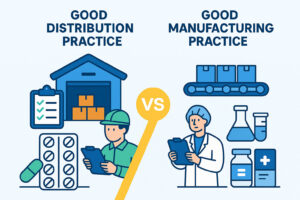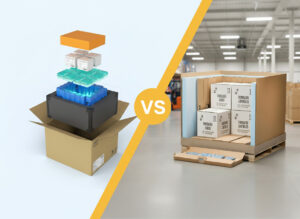FTL vs LTL: A Comprehensive Guide to Freight Shipping
FTL vs LTL
What is FTL Shipping?
FTL, or Full Truckload, involves renting an entire truck to transport your goods. This option is ideal for large shipments that can fill or nearly fill a truck. Because the truck is dedicated to your shipment, the goods are not transferred or shared with other shippers.
Key Features of FTL Shipping
2. Higher Security: Since the truck only carries your cargo, there’s less risk of damage or loss during transit.
3. Faster Delivery: With no intermediate stops or handling, FTL shipping ensures quicker delivery times.
When to Choose FTL Shipping
Your shipment is large enough to occupy an entire truck.
You need faster delivery times.
You’re shipping fragile or high-value goods that require minimal handling.
What is LTL Shipping?
LTL, or Less Than Truckload, allows multiple shippers to share the same truck space. It’s ideal for smaller shipments that don’t require a full truckload. In LTL shipping, goods from various shippers are consolidated, reducing costs for all parties involved.
Key Features of LTL Shipping
- Cost-Effective: You only pay for the portion of the truck space your shipment occupies.
- Flexible Options: Ideal for businesses with smaller or irregular shipments.
- Eco-Friendly: Consolidating shipments reduces the number of trucks on the road, lowering emissions.
When to Choose LTL Shipping?
Your shipment is too small to fill an entire truck.
Cost savings are a priority.
You’re flexible with delivery timelines.
FTL vs LTL: Key Differences
Aspect
FTL Shipping
LTL Shipping
Shipment Size
Large shipments (full truck)
Small to medium shipments
Cost
Higher (dedicated truck)
Lower (shared truck space)
Delivery Speed
Faster (direct transit)
Slower (multiple stops)
Handling
Minimal
Increased handling
Security
High
Moderate
| Aspect | FTL Shipping | LTL Shipping |
|---|---|---|
| Shipment Size | Large shipments (full truck) | Small to medium shipments |
| Cost | Higher (dedicated truck) | Lower (shared truck space) |
| Delivery Speed | Faster (direct transit) | Slower (multiple stops) |
| Handling | Minimal | Increased handling |
| Security | High | Moderate |
Benefits of FTL Shipping
FTL shipping offers several advantages for businesses that need reliable, secure, and fast freight services:
Speed: Direct routes and no additional stops ensure swift delivery.
Safety: Reduced handling minimizes the risk of damage.
Customization: Tailored solutions for specific cargo needs, such as temperature control.
Benefits of LTL Shipping
For businesses with smaller shipping needs, LTL provides:
Affordability: Lower costs by sharing space with other shipments.
Accessibility: Frequent services and widespread network coverage.
Scalability: Suitable for businesses of all sizes with varying shipment volumes.
Choosing Between FTL and LTL
The decision between FTL and LTL shipping depends on several factors:
Shipment Size and Weight
- If your goods can fill an entire truck, FTL is more efficient.
- For smaller shipments, LTL is cost-effective.
Delivery Timeline
- Urgent deliveries favor FTL due to its speed.
- Flexible timelines work well with LTL.
Budget Considerations
- FTL is more expensive but ensures faster and safer delivery
- LTL is ideal for businesses seeking to minimize costs.
Nature of Goods
- Fragile, high-value, or perishable items benefit from FTL due to minimal handling.
- Durable goods with no strict timelines can utilize LTL.

How to Optimize Your Freight Shipping
Understand
Your Needs
Assess your shipment size, delivery timeline, and budget.
Partner with Reliable Carriers
Work with trusted logistics companies that offer both FTL and LTL options.
Leverage Technology
Use freight management software to track shipments and optimize routes.
Plan
Ahead
Early planning ensures availability and cost savings.
Understand
Your Needs
Assess your shipment size, delivery timeline, and budget.
Partner with Reliable Carriers
Work with trusted logistics companies that offer both FTL and LTL options.
Leverage Technology
Use freight management software to track shipments and optimize routes.
Plan
Ahead
Early planning ensures availability and cost savings.
Final Thoughts
Understanding the differences between FTL vs LTL is essential for making informed shipping decisions. Both methods have their unique advantages and cater to different business needs. By evaluating your specific requirements, you can select the best option to streamline operations, reduce costs, and enhance customer satisfaction.
Partnering with a reliable logistics provider ensures your freight’s safe and timely arrival, whether you choose FTL or LTL. Consider your shipment size, timeline, and budget, and optimize your shipping strategy to achieve your business goals.
For more insights on freight shipping, contact us today and explore tailored logistics solutions for your business needs.






